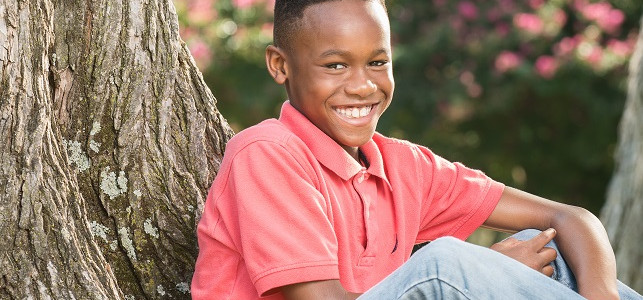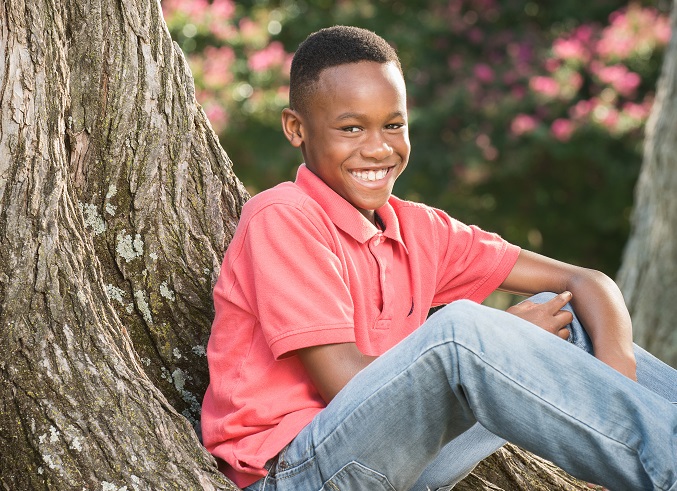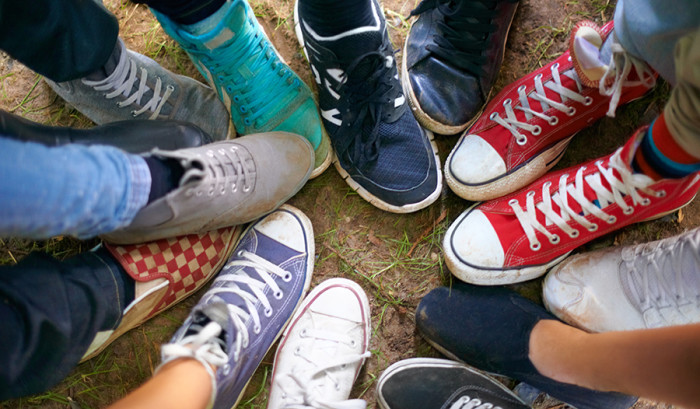
Understanding puberty from skin problems to sweat
From changes in skin cells on the scalp to sweat glands in the feet, there’s a lot going on physically during puberty. The hormones produced during this stage of development trigger many changes, both physical and emotional. Understanding exactly what’s going on with their bodies can help adolescents navigate this challenging time.
Read on to learn more from adolescent medicine specialist Dr. Stephanie Crewe about the biology behind some of the physical changes happening during puberty – and what can be helpful when these changes cause concerns.
When does puberty start?
Puberty is the time when the body matures from a child to an adult. It begins at an average age of 9-10 and related physical changes may start to appear in the tween/pre-teen years.

Skin problems during puberty
Acne is a very common skin condition that causes different types of bumps. Many teens and pre-teens get acne because of the hormonal changes that occur with puberty. causing acne to appear on the back, upper chest, neck, shoulders and most commonly, the face.
These areas are more prone to acne because they have pores that contain oil glands that make sebum, an oil that serves as a skin moisturizer. As puberty progresses, hormones stimulate these glands to make more sebum and they often become overactive and make too much sebum, leading to clogging of the pores with excess oil, dead skin cells and bacteria. Successful treatment of acne depends on the type of bumps an individual has and what skincare regimen has to be instituted to achieve the best results. In general:
- Irritating scrubs should be avoided. Acne-prone skin should be washed with a soft cloth, gentle cleanser and warm water one to two times per day.
- Oil-free, non-comedogenic makeup, sun protection and moisturizer products should be used and makeup should be removed daily. (Non-comedogenic means the product does not contain ingredients known to clog pores.)
- Picking, squeezing or popping acne lesions (pimples) should be avoided.
There are many over-the-counter products for prevention and treatment of acne. Products with benzoyl peroxide and salicylic acid are highly effective in treating most mild forms of acne. Benzoyl peroxide kills skin bacteria that can lead to acne and also reduces inflammation associated with pimples. Salicylic acid treats acne by causing the skin to dry out and peel and reduces swelling associated with acne.
It’s important to always follow directions on the product label and to contact your child’s doctor if their acne is not getting better. It’s also important to note that acne medications typically take weeks or months to work, so don’t expect to see instant or same-day results.
Scalp glands become overactive due to hormone changes
The scalp and hair are an extension of the rest of the skin on our body and both contain glands that make oil (sebum) to moisturize the hair and skin. These glands may become overactive due to hormone changes during puberty and produce more oil than needed. The oily hair that can result can be quite annoying and even upsetting to teens and pre-teens.
Often genetic factors, as well as the texture of the hair, also contribute greatly to how “oily” or “dry” the scalp tends to be. Proper hair care can help regulate the amount of oil, but hair care is not one-size-fits-all and depends on the texture of the hair, as well as perceived dryness versus oiliness, and how active the individual is. Hair should be washed gently and the drier the scalp/hair, the less frequent hair washing should be performed. The frequency of shampooing varies based on hair types from daily (typically oily hair) to weekly (typically dry and/or curly hair as curlier hair tends to be drier, and thus more fragile, than straighter and oilier hair types.)
Harsh heat-styling products should be avoided, particularly for individuals with fine, fragile or combination hair types. Additionally, chemical treatments including relaxers, perms and coloring treatments should be used cautiously and with professional input to avoid unintentional hair breakage and/or damage. Regular haircuts and consistent use of moisturizing conditioners are also good ways to help keep hair healthy.
Sweating increases as the sweat glands become more active
The increase in various hormones during puberty makes the body’s sweat glands more active and they produce more sweat. While sweat is actually odorless, the body odor associated with sweat results from bacteria on the skin multiplying in sweaty areas like armpits and breaking down the sweat into amino acids (the natural compounds that combine to form proteins).
Showering or bathing with soap removes the bacteria that causes body odor, so a daily shower or bath with soap and water – paying particular attention to the armpit area, genital area and feet – is key. Deodorant helps keep the body smelling fresh once the bacteria have been removed. Antiperspirant can help decrease sweating, so using a deodorant/antiperspirant combo is also helpful. Apply each morning and keep on hand to re-apply during times of increased physical activity.

During puberty, Stinky feet can become an issue
The sweat glands in the feet can produce up to a pint of sweat every day so it’s not surprising that stinky feet can be an issue during puberty (when sweat glands are more active) and even in the years leading up to it.
Similar to body odor, careful washing in key areas can help keep foot odor at a minimum. Always use soap and water and be sure to scrub carefully between the toes which is a great place for bacteria to breed. Washing the feet more than once each day is recommended, especially during really warm weather or when a child participates in sports activities with closed-in shoes (i.e., sneakers or cleats). Once the bacteria are removed, be sure the feet are completely dry before putting on a clean pair of socks. Placing a small amount of baby powder in each shoe just prior to wearing will assist in keeping feet dry, but keep in mind that socks really do help reduce odors. Shoes soak up both the bacteria AND the odor if they are not worn with socks. Giving shoes a day to air out can also help reduce foot odor.
Puberty creates a host of physical changes that affect the skin, hair and sweat glands and may raise concerns.
These changes may worsen during adolescence, but many improve or resolve as a teen emerges into young adulthood. The basic hygiene practices described above are quite appropriate to continue even after puberty, as these grooming and skin care practices are important for optimal general health. Contact your health care provider with any questions or concerns you have about these changes, particularly if there is a lack of improvement, medication side effects or atypical patterns.
Dr. Stephanie Crewe, adolescent medicine specialist can help with your concerns about puberty
Adolescence is a time of rapid and complex physical, intellectual, emotional and social development. It is normal for adolescents to have concerns about their changing bodies, changing moods and changing interactions with others. Our goal is to help teens and pre-teens through the process of understanding these changes. Call (804) 828-CHOR (2467) to schedule an appointment with Dr. Crewe.
